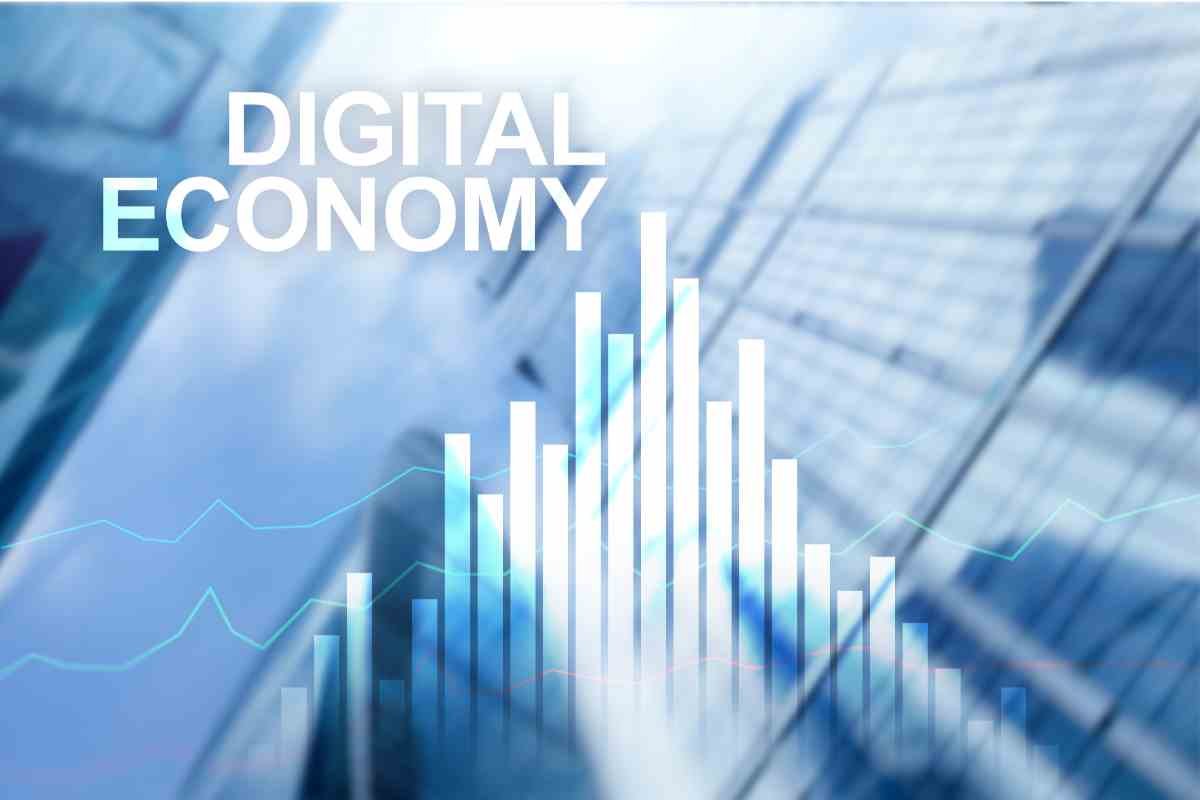India’s digital economy is remarkably growing, significantly impacting its overall economic landscape. With millions of internet users and a burgeoning e-commerce market, the country is positioning itself as a global leader in digital innovation. However, this rapid advancement comes with its own set of challenges.
Current Landscape of India’s Digital Economy
- Internet and Smartphone Penetration
As of March 2024, India boasts approximately 954 million internet subscribers, substantially increasing from 881 million in March 2023. This growth is largely fueled by increased smartphone usage, expected to exceed 1.1 billion users by 2025.
| Year | Internet Subscribers (in millions) | Smartphone Users (in billions) |
| March 2023 | 881 | 1.0 |
| March 2024 | 954 | 1.1 (Projected by 2025) |
- Contribution to GDP
The digital economy accounted for about 4.5% of India’s GDP in 2014 and is projected to contribute around 20% by 2026, highlighting the transformative impact of digital technologies across various sectors.
E-Commerce Growth
- Projections for E-Commerce
India’s e-commerce market is expected to grow at a compound annual growth rate (CAGR) of approximately 31%, reaching $200 billion by 2026. Deloitte even projects that this sector could reach $325 billion by 2030.
- Rural E-Commerce
The rise of e-commerce in rural areas is anticipated to be a major driver of this growth as more consumers gain access to online shopping platforms.
[ruby_related heading=”More Read” total=5 layout=1 offset=5]
Digital Payments Revolution
- Unified Payments Interface (UPI)
India has emerged as a global leader in real-time payments through UPI. By 2027, UPI is expected to account for about 90% of total retail digital payments in India, reflecting a significant shift towards cashless transactions.
| Year | Projected Digital Payments Value (in trillion USD) |
| 2026 | $10 |
- Government Initiatives
The Digital India Mission aims to enhance digital infrastructure and promote technology use across sectors. Programs like Pradhan Mantri Jan Dhan Yojana (PMJDY) have expanded banking access, particularly in rural areas.
As we stand on the brink of a digital revolution, India is not just transforming its economy; it is redefining the very fabric of society. The journey to a $1 trillion digital economy by 2028 is filled with immense opportunities, but we must also confront the challenges that come with rapid change.
Challenges Facing India’s Digital Economy
Digital Divide
- Access Disparities: Despite having over 800 million internet users, India still has a large population that remains unconnected, particularly among women, rural residents, and marginalized groups. This digital divide severely limits the reach of digital services and economic participation for many citizens.
- Urban-Rural Gap: There is a pronounced gap in internet access and digital literacy between urban and rural areas. Approximately 55,000 villages lack cellular connectivity, making it difficult to implement digital initiatives effectively.
2. Cybersecurity Threats
- Increasing Vulnerabilities: As the digital economy expands, so do cybersecurity risks. India has seen a rise in data breaches and cyberattacks, with the average cost of a data breach reaching $2.18 million in 2023. Common threats include phishing and compromised credentials.
- Need for Robust Security Measures: The growing reliance on digital platforms necessitates enhanced cybersecurity frameworks to protect consumer data and build trust in digital transactions.
3. Infrastructure Deficits
- Inadequate Digital Infrastructure: India’s digital infrastructure is still developing and often lags behind that of other countries. Issues such as slow internet speeds and unreliable connectivity hinder the effectiveness of digital services.
- Investment in Rural Connectivity: Significant investment is required to improve infrastructure in rural areas, where the cost of building such networks is often deemed unviable by private entities.
4. Regulatory Challenges
- Complex Regulatory Environment: The regulatory landscape in India can be cumbersome, with evolving rules that may not keep pace with technological advancements. For example, data localization laws require that payment data be stored within India, which can deter foreign investment.
- Compliance Burdens: New IT regulations impose strict compliance requirements on companies, including personal liability for employees, which can stifle innovation and deter foreign firms from entering the market.
5. Digital Literacy
- High Digital Illiteracy Rates: A significant portion of the population lacks the skills necessary to navigate digital platforms effectively. This lack of familiarity with technology limits participation in the digital economy.
- Language Barriers: With over 1,600 languages spoken in India, the availability of digital services in local languages is limited, creating barriers to access for non-English speakers.
6. Consumer Protection Issues
- Complex Financial Products: The rise of digital finance has introduced complex products that can confuse consumers. Complaints related to mobile banking and electronic transactions have surged, highlighting the need for better consumer protection measures.
- Emerging Risks: New financial models such as embedded finance raise concerns about anti-competitive practices and hidden fees that could exploit consumers.
Global Comparison
- Ranking Among Countries
India ranks as the third largest digitalized country globally, behind the United States and China. However, it ranks 12th among G20 countries when evaluated at the user level.
- Comparison with Developed Nations
India’s digitalization efforts have surpassed those of several developed countries like the UK and Germany, indicating strong growth potential compared to more mature economies.
India’s digital economy is expected to reach a valuation of $1 trillion by 2028, driven by increasing smartphone penetration and affordable data plans.






